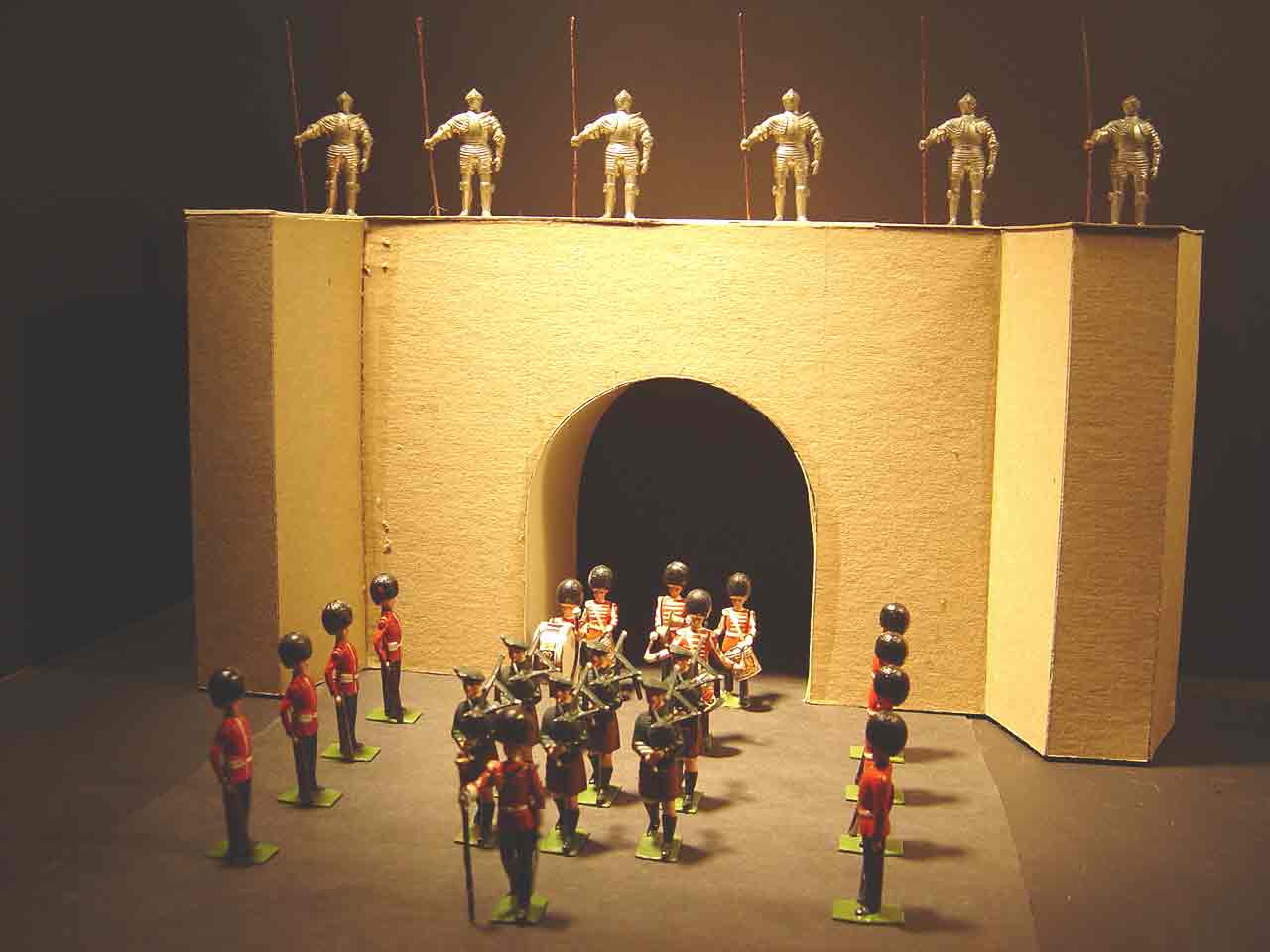--more--

In either event, whether a defender was standing at a crenellation (to shoot at an attacker), or behind a merlon (to avoid being hit by an attacker's arrow while he was re-loading), the defender needed a floor to stand upon. In the photo shown here, we can observe that a floor for the defenders has finally been constructed at the top of the wall. (See Plate 40 for a picture of the top of the wall before the floor was added.)
We cannot actually see the new floor in this photo, because the picture was taken from a low angle, but we do see six suits of armor, representing the full armor plate of the 16th century, standing upon the top of the wall.
The merlons and crenellations, shown in Plate 30 have not yet been added. When the merlons and crenellation are completed, the top of the wall will become a battlement.
The suits of armor and soldiers shown in this photo are older models from the Collection. They are hollow-cast models that were sold by Britains Ltd., the famous manufacturer of toy soldiers. These models were added to the Collection during the 1950s and 1960s. The toy soldiers seen in this photo are slightly smaller than certain other toy soldiers currently being manufactured, having been made to the old standard scale of approximately 1/34, as opposed to the modern standard scale of 1/32.
The models of marching musicians seen here represent the Drums and Pipes of The Irish Guards, a foot-regiment of the Household Division.
Go to top of page